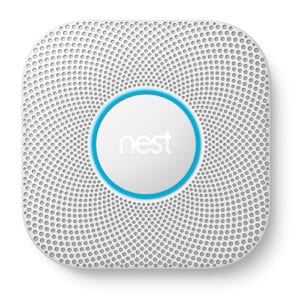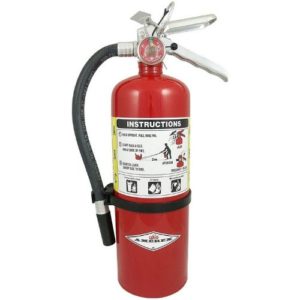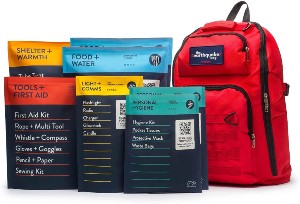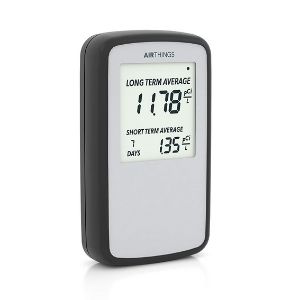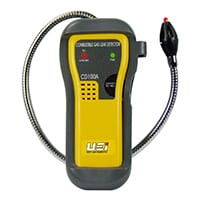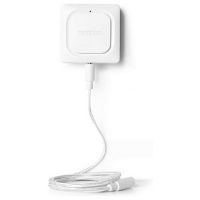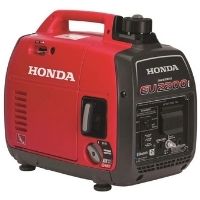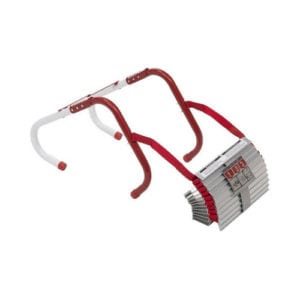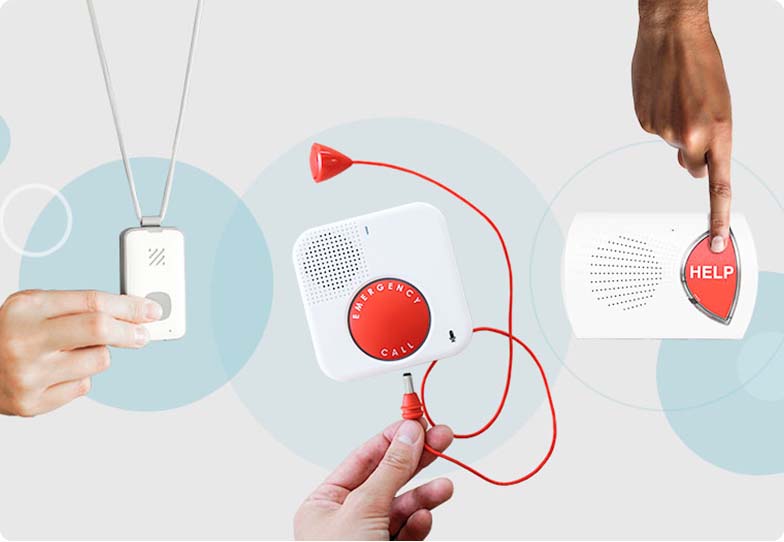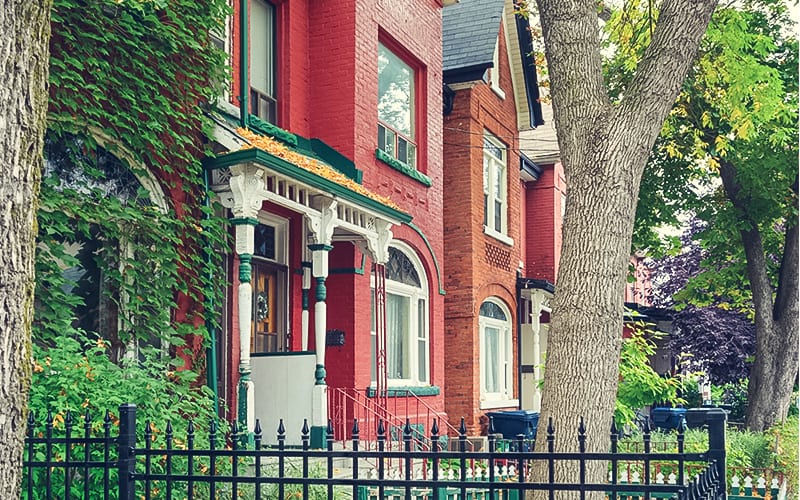Poisons exist in nearly every corner of your home, but you have the power to keep your family and pets safe from them. In addition to keeping the poison control number—+1-800-222-1222—prominently posted on your fridge or programmed in your phone, you can take steps to avoid needing it in the first place.
The key is knowing what the threats are and how to neutralize them. Use this room-by-room guide to identify household poisons, eliminate risks, and prevent an accidental poisoning in your home.
How to remove poisons in the kitchen
The kitchen tends to be where everyone gathers, but it’s also where some of the most common household poisons exist. Here’s everything you need to know to keep your kitchen a place for food and conversation, not poison.
What to look for: It’s important to keep your kitchen clean and hygienic for food preparation. That’s why household cleaners—even natural cleaners—are often the biggest kitchen culprits when it comes to poisoning danger:
- Dishwashing detergent
- Window cleaners
- Ammonia
- Drain cleaners
- Oven cleaners
- Furniture polish
- Disinfectants
What to get rid of: Always dispose of empty chemical containers and never reuse them. Don’t place cleaning products in empty bottles or generic plastic containers. If the original container becomes broken or no longer closes properly, it’s time to throw it out. Same goes for items with labels that are missing or unreadable.
What to do next: Make sure to keep all cleaning products in their original packaging and in locked cupboards. Never store cleaning products near food or mix different products together—especially ammonia and bleach because they create a toxic gas when combined.
Products that can help: One of the most important things you can do is keep dangerous cleaning products out of reach of little hands and curious noses. Attach safety locks and latches to any cupboard or drawer where cleaners are kept.
The Good Stuff Child Safety Catches are perfect for drawers of all sizes and easy to install. For cupboards, try Safety 1st Magnetic Cabinet Locks. These powerful locks can be opened only with a magnetic key, which means your little ones will still be safe even as they get older and smarter.
How to remove poisons in the garage
Home to vehicles, tools, and everything that has no other place to go, the garage is full of potential household poisons. Take the precautions outlined below to make sure no one in your home accidentally becomes a victim.
What to look for: Take an inventory of common poisons found in the garage:
- Gas
- Kerosene
- Pesticides
- Fertilizer
- Weed killer
- Leftover paint and stains
- Turpentine
- Motor oil
- Automotive cleaners and wax
- Windshield washer fluid
- Antifreeze
What to get rid of: The fewer toxic items you have in your garage, the less likely it is someone will be accidentally poisoned. Throw out old or unneeded paint and stains, unusable amounts of automotive products like oil, and anything that isn’t clearly labeled or in its original container. Most of these products have proper disposal methods, so be sure to find out where and how to safely get rid of them.
What to do next: An organized garage is a safe garage. Group like products together and install shelving, cupboards, and drawers to keep dangerous substances out of reach of pets and children. If your storage containers don’t lock on their own, add a padlock to keep things safe.
Products that can help: Overhead is one of the safest places to store dangerous items. SafeRacks Overhead Storage Racks are heavy-duty, customizable, and able to handle up to 600 pounds. If you have room along garage walls, you might like Edsal’s Storage Rack with adjustable shelves.
Place toxic substances behind closed doors with a utility cabinet, like this one from Keter, which comes with adjustable shelves but needs a padlock.
How to remove poisons in the bathroom
One of the most used rooms in the home, the bathroom contains everything from cleaners to cosmetics and medicines. Use these smart strategies to avoid accidental bathroom poisoning and make sure no one gets sick.
What to look for: There are three main areas of danger in your bathroom:
- Medicine cabinet
- Makeup bag
- Wherever you store your bathroom cleaners
Each of these types of poisons needs to be managed in its own way. Identify the toxic items you keep, such as toilet bowl and tub cleaners, makeup, perfume and colognes, styling products, and both prescription and over-the-counter medications.
What to get rid of: Follow steps for proper medication disposal and throw out old makeup and empty fragrance bottles. Anything in an unlabeled container also needs to go.
What to do next: Lock up all medications. Add safety locks to drawers where you keep cosmetics and fragrances. Store cleaning supplies, mouthwash, and hair products in high locations or behind locked cabinets to keep them out of reach of little ones and pets.
Products that can help: If you don’t have a secure, dedicated space to store medications, consider getting a locking childproof container. The eoere Combination Lock Medicine Cabinet keeps medications out of sight, and its programmable lock makes sure no one can get to the meds without the combination. It’s small enough to fit in a bathroom cabinet and can hold up to twenty-four prescription bottles.
How to remove poisons in the laundry room
Once again, a room dedicated to cleanliness can also present accidental poisoning hazards. Find out how to minimize the risks with the tips outlined below.
What to look for: These are all common household poisons that can all be deadly if ingested:
- Laundry detergents
- Fabric softeners
- Dryer sheets
- Starch
- Stain removers
- Bleach
Pay extra attention to the type of detergent you use. One study shows that colorful laundry detergent pods have led to an increase in accidental poisonings among children,1 so keep them out of reach and in their original packaging.
What to get rid of: Remove any laundry product or container that can be easily confused for candy. If you can’t keep them in an inaccessible or locked location, it’s better to donate unused pods to a shelter and buy new detergent that’s less tempting. Throw out empty bleach containers and never reuse them for another purpose.
What to do next: To keep your loved ones safe from poisoning, consider installing shelves or cabinets with locking doors.
Products that can help: Wall cabinets that can fit above the washer or dryer are the perfect solution to keep your family safe from toxic laundry products. The Prepac Elite Wall Cabinet features three storage spaces and two adjustable shelves. Its 54-inch width is ideal for placement above the washing machine.
How to remove poisons in living spaces
Some poisoning dangers are more difficult to detect. Find out how to make every space in your house safe, including bedrooms, family rooms, and hallways.
What to look for: Poisoning danger can exist in items brought into your home, like purses, luggage, and certain plants. There can even be poisonous gases in the air. Remain aware of everything that enters your home and take precautions to keep dangerous substances away from vulnerable household members like pets, children, and people who have chronic illnesses.
What to do next: Designate a place for guests to store purses, backpacks, or other packages during their visits. Give long-term visitors a secure area to store their luggage, including medications and toiletries.
Research plants and flowers that you receive to make sure their leaves and pollen are not toxic to pets. Common plants to avoid include poinsettias, lilies, aloe vera, and tulips.
Install alarms and detectors to protect your family from carbon monoxide poisoning.
Products That Can Help: Having a carbon monoxide detector is the only way to know if your home has dangerous levels of carbon monoxide. Consider a combination smoke and CO alarm, like Nest Protect, that lets you know exactly where the danger is and sends alerts right to your smartphone or computer.
It may feel like poison dangers are everywhere and calling poison control is only a matter of time. But with the right awareness, preparation, and prevention, you can protect your loved ones from harm. Get started today by using this guide to inspect each room of your home to identify potential danger and take the right steps to make your home as poison proof as possible.
Related articles on SafeWise
- Mallory G. Davis, AAP News and Journals Gateway, “Pediatric Exposures to Laundry and Dishwasher Detergents in the United States: 2013–2014” May 2016. Accessed January 17, 2021.
